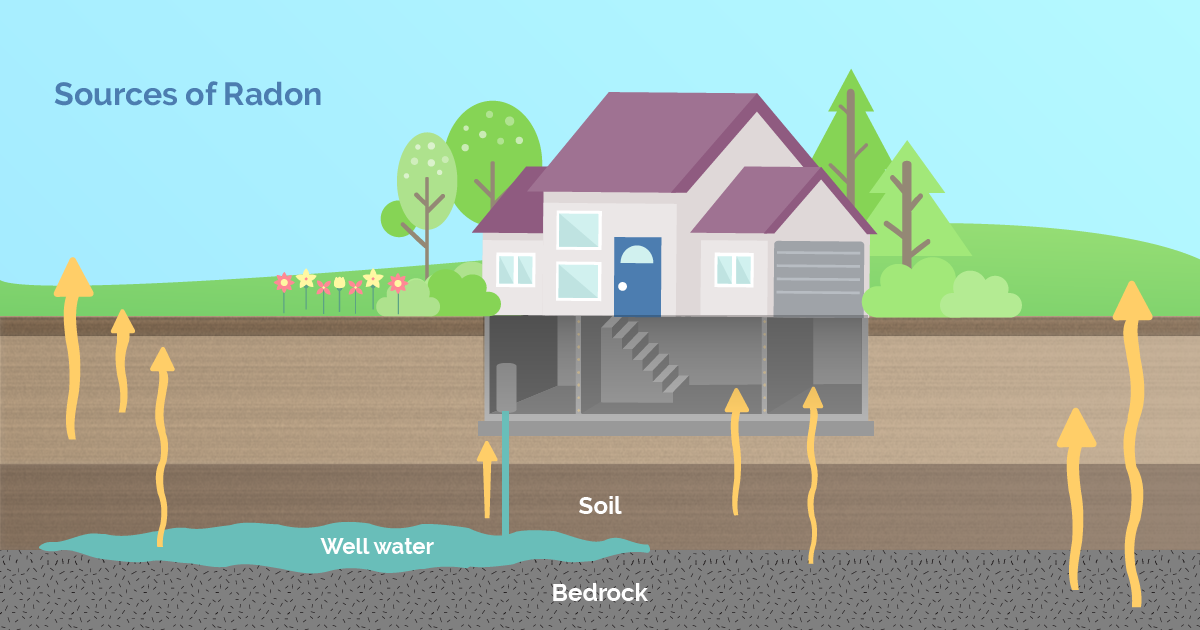Radiation Security
Is radon really bad for you?
Breathing radon over time increases your risk of lung cancer. Radon is the second leading cause of lung cancer in the United States. Nationally, the EPA estimates that about 21,000 people die each year from radon-related lung cancer. Only smoking causes more lung cancer deaths.

The case dramatized the fact that radon degrees in particular dwellings can sometimes be orders of magnitude higher than typical. Radon quickly came to be a standard home owner problem, though regular residential exposures are two to three orders of size lower (100 Bq/m3, or 2.5 pCi/L), making individual screening necessary to evaluation of radon danger in any specific house. Radon does not trigger itchy eyes or sprinkling noses, get more info but it does harm your lungs over time. Long-term exposure over the course of years, even if radon degrees go down as well as rise in time, substantially increases your chances of creating lung cancer cells. Considering that you're spending hours at once in your home breathing in the air, you're mosting likely to take in lots of radon as you cook, shower, as well as sleep if it's present in the home's air supply.
Many health and also radiation experts concur that while a tiny portion of granite kitchen counters might emit enhanced levels of radon, a lot of countertops emit very reduced degrees. According to the United States Environmental Protection Agency (EPA), it's really unlikely that a granite kitchen counter in a house would boost the radiation degree over the regular, natural background level that comes from close-by dirt and also rocks. Still, people concerned about radon from kitchen counters as well as from various other home sources can examine these degrees utilizing residence discovery kits or can work with a specialist to do the testing (see the section "How can I avoid exposure to radon?"). The words radon examination "failed" or radon examination "passed" are sprayed around.
Is radon mitigation really necessary?
When radon gas enters the body, it exposes the lungs to https://mix.com/lynethc37a/posts?modal=1&url_id=608725586147303424 small amounts of radiation. In small quantities, experts say this is harmless. However, in persistent exposures or larger quantities, radon can damage the cells of the lining of the lungs, increasing a person's chance of developing lung cancer.
This is the level of around 90 percent of residences in the United States. The EPA suggests that home owners take action when direct exposure levels reach over 4 picoCuries per litre, because of the belief that enhancing radon exposure is correlated to a gradually better risk for cancer cells. Around one in 15 houses in the USA has elevated radon degrees. The odor-free gas can enter houses through cracks in wall surfaces, foundations and floors.
- Your threat of lung cancer cells enhances significantly with exposure to greater radon levels.
- Radon gas is a naturally-occurring byproduct of the contaminated decay of Uranium in the dirt.
- Relying on your geographic place, the radon levels of the air you breathe beyond your home might be as high as 0.75 pCi/L.
- The US EPA has put it simply, mentioning, "Any radon exposure has some threat of creating lung cancer cells.
Individuals who smoke or made use of to smoke have an even greater opportunity of creating lung cancer cells if they are revealed to radon. You might just consider what you're subjected to outdoors when you assume regarding air pollution. Yet interior air high quality in your house issues, also, and it can be majorly impacted by the visibility of a radioactive gas called radon. This gas can accumulate to dangerous levels as well as boost your threat for establishing lung cancer cells-- also if you do not smoke, according to the American Lung Association.

What are the symptoms of radon in your home?
If a person has been exposed to radon, 75 percent of the radon progeny in lungs will become "harmless" lead particles after 44 years. When an alpha particle damages a cell to make it cancerous, the onset of lung cancer takes a minimum of 5 years but most often 15 to 25 years, and even longer.
Because you cant scent or see radon, you angle know whether your home has harmful levels of the gas unless you have the air checked. Nevertheless, if examinations show that radon is placing you and also your family in danger, you can take some easy steps to clear the air.
How long does it take for radon to cause cancer?
Fact: You will reduce your risk of lung cancer when you reduce radon levels, even if you've lived with an elevated radon level for a long time. Keep in mind that radon levels below 4 pCi/L still pose some risk and that radon levels can be reduced to 2 pCi/L or below in most homes.